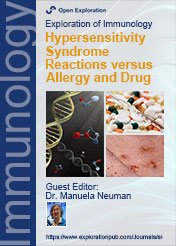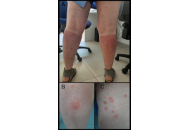
Hypersensitivity Syndrome Reactions versus Allergy and Drug
Guest Editor
Dr. Manuela Neuman E-Mail
University of Toronto, Toronto, Canada
About the Special lssue
The interplay of immune system with drugs and herbs includes multiple facets. These include the effects of alcohol on the effects of other hepatotoxicants and on the pharmacological effects of various drugs. Also relevant is the possible role of alcohol on the effects of carcinogenic agents. Less striking, but significant, are the effects of other drugs on the immune-induce hypersensitive reaction. More difficult to identify but presumably significant, are the effects of alcohol-drug interplay on the development of an alcoholic liver disease. A common denominator of them is the role of ethanol-induced P-4502E1 (CYP2El) in affecting the toxicity of some hepatotoxicants and the effects of some drugs. Less prominent but also relevant is the effect of interplay with alcohol and aldehyde dehydrogenase in the toxicity of some drugs and supplements. During the second half of the 20th century alcohol has been recognized to enhance the toxic effect of other hepatotoxic agents such as acetaminophen, aflatoxin B1, allyl alcohol, bromobenzene, cocaine, enflurane, galactosamine, halothane. The enhancement of toxicity by ethanol does not depend on an ethanol-induced hepatic injury but rather on the activity of the cytochrome P450 2E1 that converts the respective toxicants to their active metabolites. Nevertheless, inhibition by ethanol of regenerative response to injury may contribute to an enhancement of toxicity by ethanol.
The HYPERSENSITIVITY REACTIONS have a relevance on the dermatological diseases as well as on the cardiotoxicity.
Keywords: Allergy, drug-induce-liver-injury, herbal-induced-liver-injury, dermatotoxicity, cardiotoxicity, antiepileptics-induced hypersensitivity reaction, HLA, immunity, human herpes virus and hypersensitivity
Published Articles
